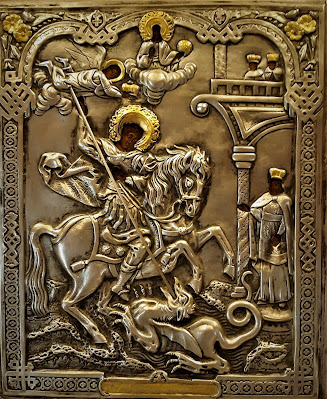Our Lord Jesus Christ said, “I am the good shepherd; I know my own and my own know me, as the Father knows me and I know the Father; and I lay down my life for the sheep.” [St. John 10:14, 15]
In those words He outlines the two characteristics – the two marks – that distinguish the Good Shepherd: an intimate personal knowledge of us, and a sacrificial love for us. And these two characteristics, or marks, embrace two of the major doctrines of our faith: first, the Incarnation – the fact that our Lord took human flesh upon Himself and lived a human life which means that He truly knows us; and the Atonement – the fact that He willingly went to the cross as a sacrifice for our sin, so that each of us could be restored to a unity with God.
From a purely human point of view, we are unable to really sympathize with someone unless we have a knowledge of the other person. The better we know someone, the more understanding we can have. For instance, we are all able to sympathize to some degree with someone who has lost a child, but if we ourselves have experienced the death of a child, our sympathy becomes empathy – we know exactly what they are going through. When we have shared the same difficulties, or we have had the same temptations, or if we have had any sort of similar experience as another person, there is an empathetic knowledge that helps form a bond between us.
This is a tiny glimpse of the knowledge that Christ speaks about in His relationship with us. He shares our human nature, including all our sorrows, our temptations, our difficulties – He says that He “knows us.” And because He shares our human nature, He says that we can know Him.
But He goes even further: He says that He knows us, and we know Him, just as the Father knows Him and He knows the Father. This reveals a profound truth: our Lord Jesus Christ shares our nature, and He also shares the nature of the Father. In other words, He is God and Man in one Person. Here is the foundational doctrine of our faith: that the Eternal Son, who is One with the Father, has taken upon Himself our nature, so that He is Man also, feeling with human feelings, sharing in our human sorrows, knowing by actual experience all aspects of human life. He is our Good Shepherd because He is the Incarnate Son. The two are completely interwoven.
And there is the other distinguishing characteristic, or mark, of the Good Shepherd: that He “lays down his life for the sheep.” Just as His knowledge of us rests upon the truth of the Incarnation, so the sacrifice of Himself upon the Cross reveals another essential Catholic truth: Christ’s Atonement. Although we cannot fully understand the exact way – the precise mechanics – by which the Atonement achieves our redemption because it is, after all, a mystery which is beyond human grasp – it is enough to know that by His death, He has rescued us from the power of Satan, and restored us to a proper relationship with our Father in heaven.
These theological doctrines of the Incarnation and the Atonement are not just matters of speculation, to be considered by professional theologians; but they describe the close and personal relationship we have with God through our Lord Jesus Christ.
We have a Good Shepherd who laid down His life for us. Even though we cannot now see Him with our human eyes, He knows us and we know Him. Sight, although it can be a great help towards knowledge, is not necessary to it. Millions who have never seen Christ in the flesh have learned to know Him more deeply than some of those who were able to witness His life and miracles first-hand. As the Scriptures remind us, there is a knowledge by faith as well as by sight – and it is by faith that we know Him. We know that He has laid down His life for us; that, while we were yet sinners, He died for us. And however deficient we may be in our love for Him, nonetheless He is filled with love for us, and in that love He gives us everything we need. It really is as simple as that: if you want to know Him, then believe in Him; the more you live in faith, the more knowledge of Him you will have.
Our faith is true, and so we know that the Good Shepherd gives us everything we need, both for body and soul; grace sufficient for every need; strength in temptation, guidance in perplexity, comfort in sorrow, companionship in our loneliness, solace in our suffering. And even in death itself, we need fear no evil, for He is there to be our Life, to bring us through the dark valley, and to make us dwell in the house of the Lord, forever.
________________________________________
Pictured: "Christ the Good Shepherd"
by Charles Bosseron Chambers (1883-1964)








.jpg)



